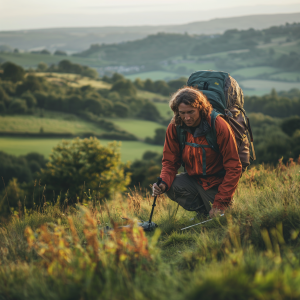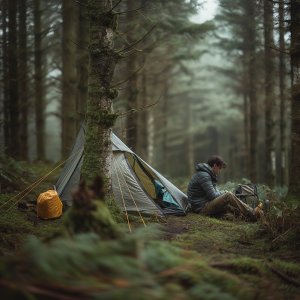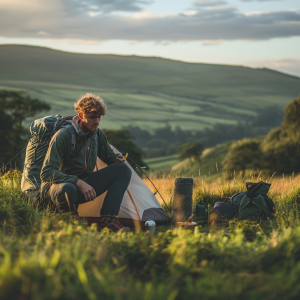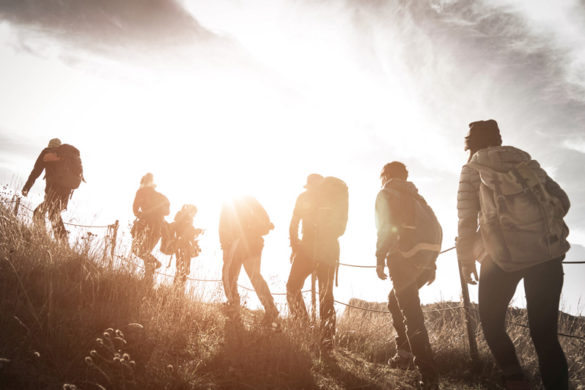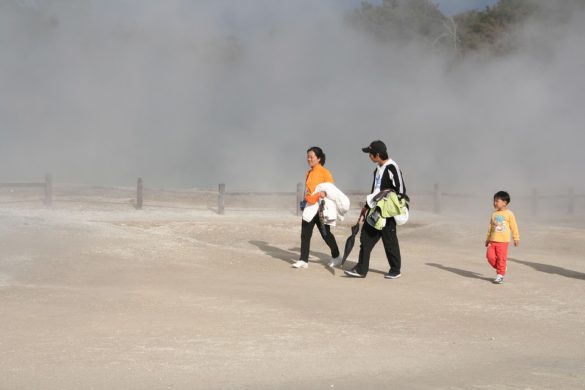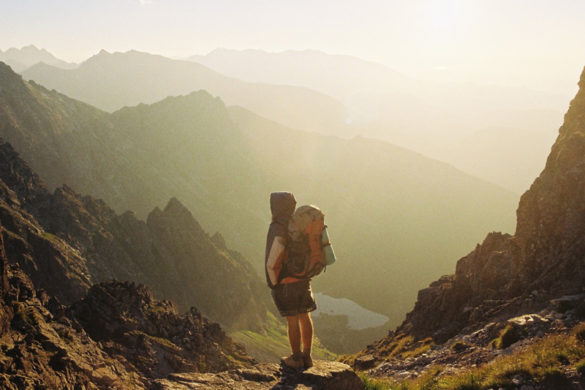Setting out on a hiking adventure invites both challenge and discovery. To maximise both, adopting lightweight backpacking practices proves invaluable, allowing hikers to traverse further with less burden. This approach facilitates greater distances and easier climbs and promotes a deeper connection with nature by emphasising minimalism and efficiency.
Lightweight backpacking encourages hikers to critically evaluate every item in their pack, focusing on essential gear and advanced skills over excess weight. As we explore these principles, we’ll uncover how both novice and seasoned hikers can benefit from lighter loads and a more mindful hiking experience.
Understanding Backpacking Categories
When venturing into the great outdoors, one of the first considerations for any hiker should be classifying their gear based on weight. Traditional backpacking can often involve carrying heavy loads, but categorising equipment by weight is crucial for those looking to cover greater distances with less physical strain.
Backpacks under 10 kilograms fall into the ‘lightweight’ category, balancing necessity and comfort. The ‘ultralight’ category exists for the more ambitious, where all gear weighs under 5 kilograms. This stringent weight limit challenges hikers to scrutinise every item, ensuring that only the most essential and multi-functional pieces make it into the pack.
Embracing Minimalism and Skill Mastery
The philosophy behind lightweight backpacking is not merely about reducing pack weight but adopting a minimalist mindset. This approach emphasises skill development over-reliance on equipment. It’s about learning to make do with less and refining wilderness survival skills.
Psychological readiness plays a significant role here, as hikers must be prepared to leave behind many “just in case” items that they might habitually pack. This mental shift towards carrying less is liberating and enhances one’s connection with nature, making the hiking experience more immersive and enjoyable.
Prioritising Gear Essentials
In lightweight backpacking, the focus often falls on the ‘Big Three‘: the backpack, shelter, and sleeping system. These items typically constitute the bulk of a hiker’s load and offer the most significant opportunities for weight reduction. Choosing a backpack that is not only light but also durable and well-structured to distribute weight efficiently is essential.
Shelter options vary widely, from ultra-light tarps to minimalist single-person tents made of advanced, lightweight materials. The sleeping system, usually consisting of a sleeping bag and pad, often uses down insulation for its excellent warmth-to-weight ratio. However, synthetic options are available for wet conditions where water resistance is crucial.
The Art of Weight Management
Managing a backpack’s weight is both a science and an art. Tools like a kitchen scale can help hikers precisely measure their pack’s total weight, enabling them to make informed decisions about what stays and what goes. It’s a meticulous process that involves examining each item’s utility against its weight.
Focusing on the ‘Big Three’ usually results in significant weight reductions, but every ounce saved elsewhere also contributes to the hike’s ease.
Customising Gear for Personal Needs
The choice of gear should also be highly tailored to the hiker’s physical needs, the environmental conditions anticipated, and the duration of the trip. What works for a weekend summer hike across well-trodden paths may not suffice for a multi-week trek through variable and harsh climates.
Adaptability is key, with equipment selected for its weight and ability to perform under expected conditions. For instance, a lighter pack might suit a short, dry trail, whereas more robust gear could be necessary for longer, wetter conditions.
Sharing Equipment
Another strategy to consider is the sharing of equipment among hiking partners. Items like tents, cooking stoves, and even water filtration systems can be shared effectively, dramatically reducing each individual’s load. This approach not only lightens the pack but also fosters a sense of teamwork and dependency, enhancing the social experience of hiking.
Strategic Layering and Clothing Choices
One of the most critical aspects of preparing for a hike is selecting the right clothing. Successful lightweight backpacking requires a strategic approach to apparel, focusing on layered clothing that can adapt to changing conditions.
The base layer should be moisture-wicking, helping to keep the skin dry and comfortable. Mid-layers provide insulation and are crucial for retaining body heat in cooler temperatures. The outer layer should be both windproof and waterproof to protect against the elements.
Transitioning from heavy, traditional hiking boots to lighter, more minimalist shoes can significantly reduce the fatigue experienced during long treks. Such footwear is designed to be both durable and light, providing the necessary support without the added weight.
Nutrition and Hydration Strategies
The food and water carried on a hike significantly affect the total pack weight and, by extension, the hiker’s energy levels and overall experience. Choosing high-calorie, nutrient-dense foods can minimise the weight of provisions while ensuring sufficient energy intake. Preparing meals that require minimal cooking can further reduce the need for heavy cooking equipment.
Lightweight water treatment solutions, such as filters or purification tablets, are essential for maintaining hydration without carrying excessive water. These strategies are practical in reducing pack weight and critical for maintaining good health and stamina on the trail.
Balancing Cost and Durability of Gear
Lightweight backpacking gear often comes with a higher price tag due to the advanced materials and technologies used to reduce weight while maintaining strength and durability. However, investing in high-quality gear can be cost-effective in the long run due to its longer lifespan and the enhanced experience it offers.
DIY solutions can be a creative and effective way to reduce costs for those on a budget. Additionally, the second-hand market is an excellent resource for finding affordable gear that does not compromise on quality. Careful equipment handling and maintenance can extend its life, ensuring it remains functional and practical for many hikes.
Minimising Environmental Impact
The principles of lightweight backpacking align closely with environmental conservation. By carrying less and choosing gear that is both effective and durable, hikers can minimise their environmental footprint.
Practices such as ‘Leave No Trace’ are integral to this philosophy, emphasising the importance of minimising impact on natural settings by reducing waste and disturbance to wildlife and habitats. The lightweight backpacking community often actively engages in these practices, contributing to conservation efforts and encouraging sustainable hiking practices.
Building Confidence and Community Support
Transitioning to lightweight backpacking can be daunting, particularly regarding safety and comfort. However, the community surrounding this hiking style is a valuable resource for newcomers. Online forums, blogs, and local hiking groups offer advice, shared experiences, and moral support to those looking to reduce their pack weight. These communities are also great places to learn about the latest innovations in gear and techniques that can make lightweight hiking more accessible and enjoyable.
Rethinking Accessories and Unnecessary Items
When preparing for a hike, it’s crucial to carefully consider each item’s necessity. Accessories such as power banks, headlamps, and trekking poles can be indispensable, but it’s important to choose ones that offer the best functionality for the least weight.
Conversely, avoiding items seldom used or serving only a single purpose can save significant weight and space. This selective process lightens the pack and simplifies decision-making during the hike, allowing hikers to focus more on the experience and less on their gear.
Conclusion: Embracing a Lighter Path
In embracing lightweight backpacking, we enhance our hiking experiences and contribute to a larger ethos of sustainability and mindfulness in outdoor recreation. Each step with a lighter pack is a step towards more sustainable practices, a deeper appreciation of nature, and a healthier lifestyle.
By continuously refining our approach and embracing the minimalist philosophy, we pave the way for future hikers to enjoy and respect the wilderness just as we do. The journey towards lightweight backpacking is not just about reducing pack weight—it’s about enhancing our connection with the natural world and each other.


